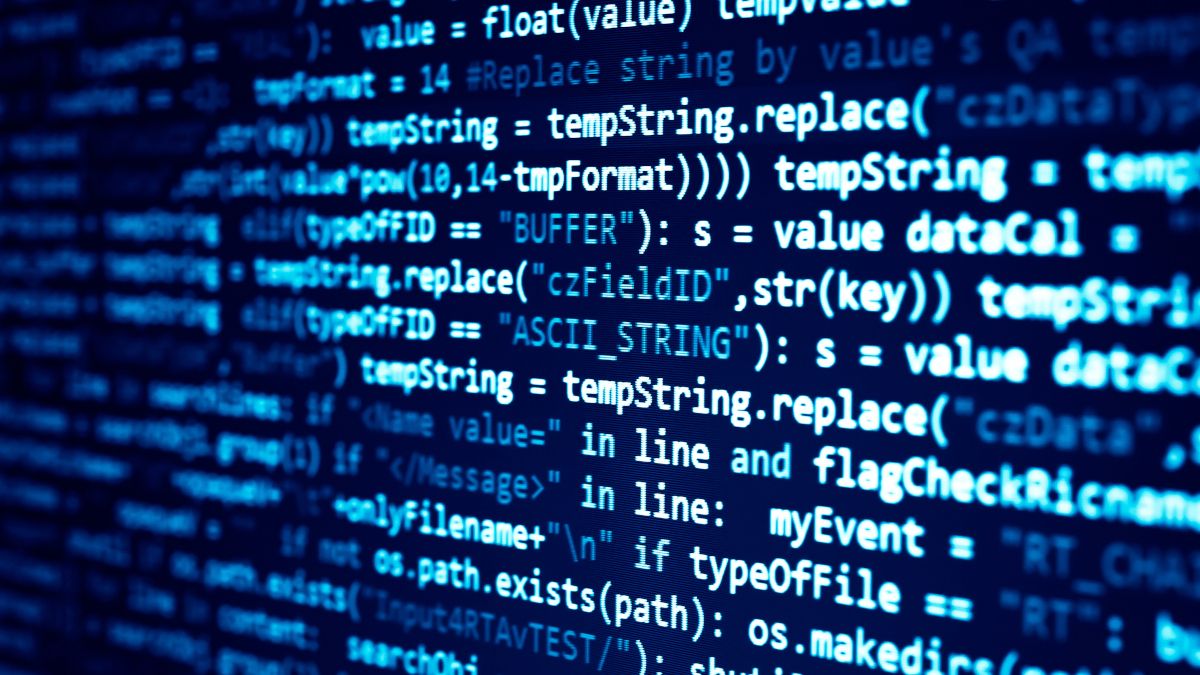
Key Takeaways
- Programming languages are tools used to instruct computers, evolving from ones and zeros to easy-to-read modern languages.
- The most popular programming languages for beginners are Python, JavaScript, Java, HTML/CSS, and Scratch.
- When choosing a language, consider project goals, the learning curve, community support, and available resources. Dabbling with multiple languages is informative and fun!
It can certainly be overwhelming to pick a programming language when you’re a beginner who just wants to dive in and get started. But don’t worry, we’re here to help. Let’s look at some of the most popular options beginners have for the first steps of their coding journey.
What Is a Programming Language?
It might seem like an elementary question, but everyone starts somewhere. Choosing a language to learn starts with understanding what programming languages are and what they do. A programming language is a tool anyone can use to instruct a computer on what they want it to do. In its simplest form, it enables a user to create instructions telling the computer what they want and how they want it done.
The earliest programming languages were just ones and zeros, but languages have become easy to read and learn today. So while you’re welcome to take on the challenge of building something with those early languages, we certainly don’t recommend starting there. Getting started with something a bit easier to read and grasp is much more fun!
Everything, from the browser you’re reading on to the operating system running your device, is developed with a programming language. The language you choose to learn should reflect what you want to accomplish with your programming. For example, if you wanted to code a browser plugin, you might choose a different language from someone aiming to develop a doorbell using a Raspberry Pi.
The Most Popular Programming Languages for Beginners
So, how does a beginner decide on a programming language to learn? These five are approachable and easy programming languages to pick up as a beginner.
- Python: Known for its simplicity and readability, Python is beginner-friendly with its clear syntax. It’s versatile and used in web development, data analysis, artificial intelligence, and automation. It’s also found a home in developing AI and LLMs (large-language models).
- JavaScript: Vital for web development, JavaScript offers dynamic functionality. Beginners find its syntax similar to English. It’s used for building interactive websites, web apps, and even mobile apps.
- Java: Renowned for its “write once, run anywhere” capability, Java is beginner-accessible with its strict syntax. It’s used in web development, Android apps, enterprise software, and more.
- HTML/CSS: These markup languages are essential for building web pages. HTML provides the structure, while CSS styles it. They’re fundamental for web development, making content visually appealing and responsive. This website is also built with HTML and CSS in the background.
- Scratch: Designed for kids and beginners, Scratch uses visual blocks instead of text-based coding. It teaches programming concepts through interactive animations and games, fostering creativity and logical thinking. Instead of teaching syntax, it focuses on teaching how to think like a programmer. Just because it’s designed with children in mind, though, don’t discount it!
What to Look at When Choosing a Language to Learn
If you’re choosing a language to learn as a beginner programmer, you should focus on these things to ensure you don’t end up in over your head and likely to quit before you start to really dig in and understand the language and what you can do with it.
Project Goals: What Do You Want to Accomplish?
Some projects are better suited to certain programming languages. Look at what you’re trying to do, and determine which language you want to learn.
Hobbyist coders might look at a different starting point from those learning to become professionals. If your goal is to use programming almost like Sudoku, keeping your mind sharp in the process, you have a much different focus than getting the quick and dirty basics down to program some smart home gear for a home project.
Learning Curve and Ease of Understanding
The languages mentioned above all have easy syntax (the language’s grammar), making it very easy to get on board with them. If you’re choosing a language to learn, focusing on how easy it is to pick up the language structure is essential to your long-term success.
Many people, especially if they opt to pick up programming as a hobby and personal pursuit, find it easier to start with simpler languages and then work on more complex languages as the need arises or if they crave the challenge.
Community Support and Available Resources
Getting to grips with a language means encountering errors and searching for fixes. You’ll have a far easier time learning a language if it has a proper documentation base and an active community. A big part of learning is poring over official documentation and combing discussion forums, so the more of each you have, the better.
The five beginner languages we highlighted above have abundant documentation and very helpful online communities.
Don’t Limit Yourself to Just One Programming Language
Just because these languages are easy to learn doesn’t mean they aren’t powerful. Some of these, like JavaScript and Python, are even used in professional web applications.
Once you learn the basic flow of a language, you can branch out and learn how other languages handle the same things. These beginner languages allow you to get your feet wet but also offer a lot of scope for advanced projects.
Most importantly, don’t limit yourself to a single language. Pick one to get over that inertia of choosing, and then dabble freely! Programming is a lot of fun, no matter which language you choose.

